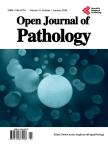Plasma Cell Neoplasms, Clinicopathological Characteristics and Immunophenotype of 21 Patients
Plasma Cell Neoplasms, Clinicopathological Characteristics and Immunophenotype of 21 Patients作者机构:Facultad de Medicina Universidad Autónoma de Nayarit Tepic Mexico Unidad de Hematología del Hospital General de México Mexico City Mexico Unidad de Patología del Hospital General de México Mexico City Mexico
出 版 物:《Open Journal of Pathology》 (病理学期刊(英文))
年 卷 期:2012年第2卷第4期
页 面:127-132页
学科分类:1002[医学-临床医学] 100214[医学-肿瘤学] 10[医学]
摘 要:Introduction: Plasma cell neoplasms are monoclonal proliferations characterized by the secretion of an immunoglobulin product known as component M or monoclonal. The World Health Organization (WHO 2008) defines as plasma cell neoplasms the following: plasma cell myeloma, plasmacytoma and those syndromes defined by immunoglobulin deposits and primary amyloidosis, The objective of the present work was to correlate their clinical, morphological and phenotype characteristics in 21 patients. Material and Methods: A 2-year retrospective review was performed of the files of the surgical pathology laboratory and of the hematology service of the General Hospital of Mexico, searching for patients with a diagnosis of plasma cell neoplasm. We analyzed the following variables: age, gender, clinical symptoms, evolution, localization, laboratory tests, morphology, and expression of immunohistochemical markers. Of the 21 patients, 12 (57.1%) corresponded to plasma cell myelomas and 9 (42.8%) were plasmacytomas (seven extraosseous and two solitary bone plasmacytoma);women predominated with 61.4% and age ranged between 22 and 84 years. Mass and epistaxis were observed in the patients with plasmacytomas, and symptoms of medullary compression and anemia were observed in those patients with plasma cell myeloma. The time of symptomatology varied from 3 to 12 months. Laboratory tests revealed that lactate dehydrogenase (LDH), beta 2 microglobulin, C-reactive protein were altered and that hypercalcemia and anemia were present more in the systemic form of the disease. Treatment depended on the clinical staging and laboratory data. Mature forms predominated morphologically. Immunohistochemical stain revealed a constant expression for CD 138, six patients expressed CD 56, and expression of the Kappa and Lambda light chains was while.



